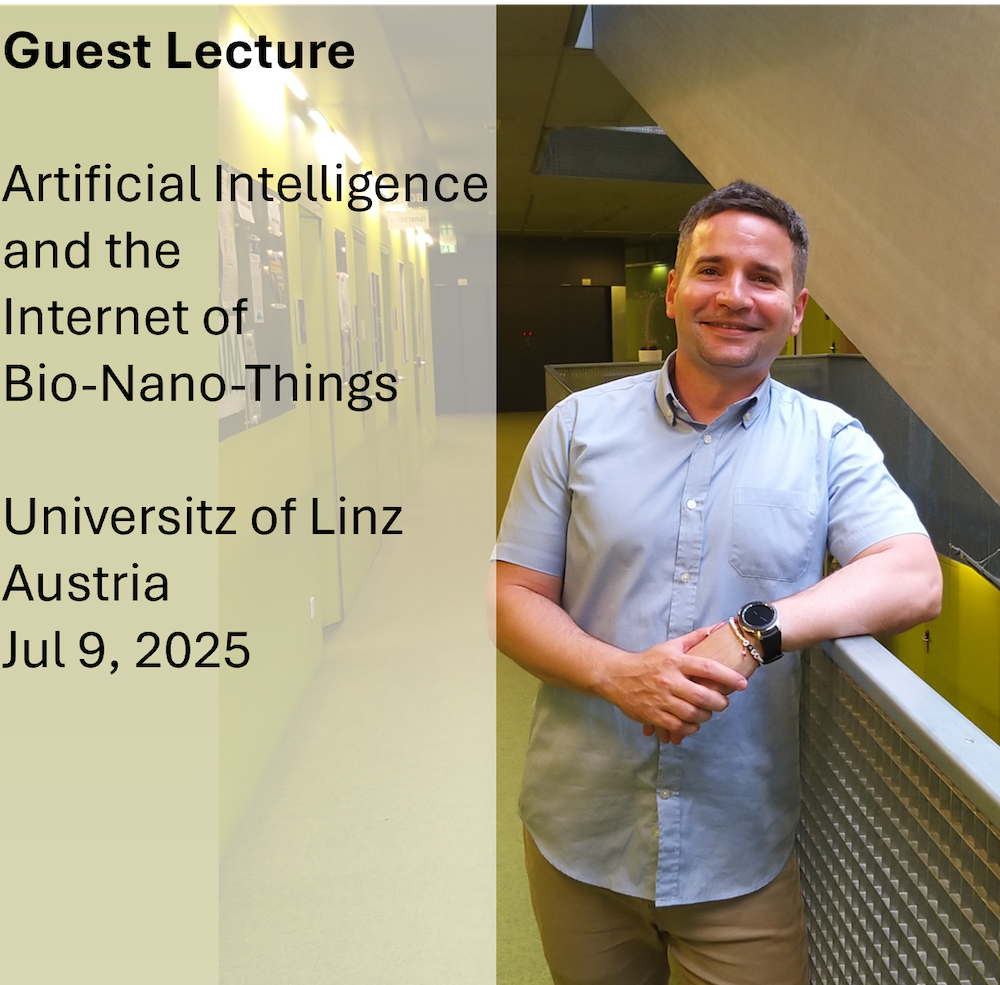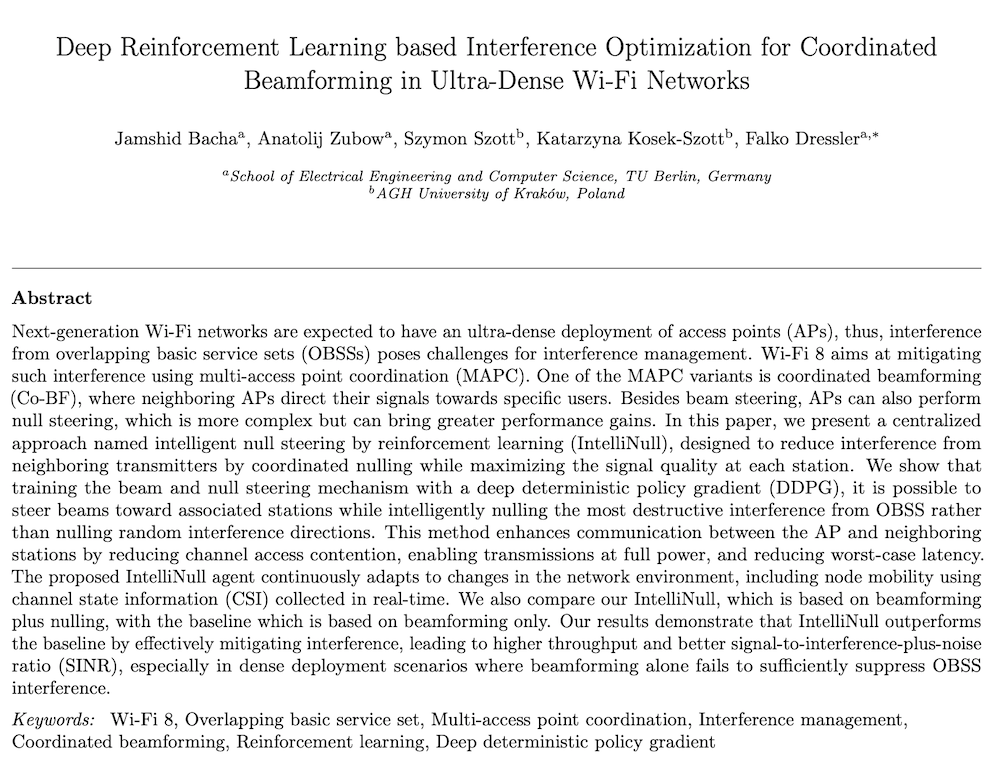Literature Database Entry
burggraf2022modeling
Jonathan Simon Burggraf, "Modeling and Simulating Chemotaxis Bacteria Networks in MATLAB," Bachelor Thesis, School of Electrical Engineering and Computer Science (EECS), TU Berlin (TUB), July 2022. (Advisor: Jorge Torres Gómez; Referees: Falko Dressler and Thomas Sikora)
Abstract
To reduce costs and difficulty of researching bionanomachines nanonetwork forma- tion via molecular communication, we present a simulation model of chemotactic nanonetwork formation among bacteria, written in MATLAB. Expanding on the model presented by Wei, Bogdan, and Marculescu [1], we implement a stochastic model based on the Gillespie’s algorithm to simulate the random walk behaviour of E. coli bacteria. We added the ability to simulate movement of the target, by modifying the chemotactic gradient calculation. We change the functions repre- senting the generation rate of attractant molecules, allowing for the calculation of multiple component chemotactic gradients for the different target locations. These can then be overlaid to form a chemotactic gradient that simulates target movement. Evaluations with the Mean Squared Distance to Target (MSDT) metric show the models ability to achieve a high degree of clustering around a moving target.
Quick access
Contact
Jonathan Simon Burggraf
BibTeX reference
@phdthesis{burggraf2022modeling,
author = {Burggraf, Jonathan Simon},
title = {{Modeling and Simulating Chemotaxis Bacteria Networks in MATLAB}},
advisor = {Torres G{\'{o}}mez, Jorge},
institution = {School of Electrical Engineering and Computer Science (EECS)},
location = {Berlin, Germany},
month = {7},
referee = {Dressler, Falko and Sikora, Thomas},
school = {TU Berlin (TUB)},
type = {Bachelor Thesis},
year = {2022},
}
Copyright notice
Links to final or draft versions of papers are presented here to ensure timely dissemination of scholarly and technical work. Copyright and all rights therein are retained by authors or by other copyright holders. All persons copying this information are expected to adhere to the terms and constraints invoked by each author's copyright. In most cases, these works may not be reposted or distributed for commercial purposes without the explicit permission of the copyright holder.
The following applies to all papers listed above that have IEEE copyrights: Personal use of this material is permitted. However, permission to reprint/republish this material for advertising or promotional purposes or for creating new collective works for resale or redistribution to servers or lists, or to reuse any copyrighted component of this work in other works must be obtained from the IEEE.
The following applies to all papers listed above that are in submission to IEEE conference/workshop proceedings or journals: This work has been submitted to the IEEE for possible publication. Copyright may be transferred without notice, after which this version may no longer be accessible.
The following applies to all papers listed above that have ACM copyrights: ACM COPYRIGHT NOTICE. Permission to make digital or hard copies of part or all of this work for personal or classroom use is granted without fee provided that copies are not made or distributed for profit or commercial advantage and that copies bear this notice and the full citation on the first page. Copyrights for components of this work owned by others than ACM must be honored. Abstracting with credit is permitted. To copy otherwise, to republish, to post on servers, or to redistribute to lists, requires prior specific permission and/or a fee. Request permissions from Publications Dept., ACM, Inc., fax +1 (212) 869-0481, or permissions@acm.org.
The following applies to all SpringerLink papers listed above that have Springer Science+Business Media copyrights: The original publication is available at www.springerlink.com.
This page was automatically generated using BibDB and bib2web.





